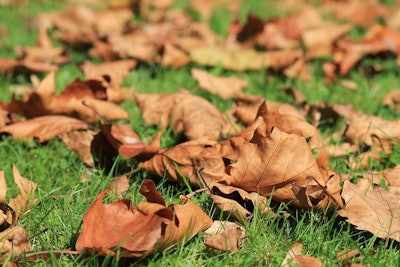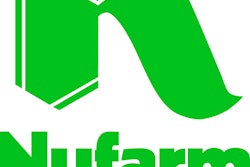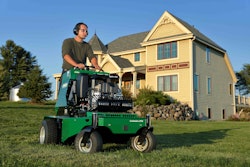
Fertilization is most beneficial when applied before the period of active growth of your customer’s grass. Therefore, the best time to fertilize warm-season grasses is during the late spring and summer, while it is best to apply fertilizer in the spring and fall for cool-season grasses.
Fall fertilization has several benefits over spring fertilization for cool-season grasses. Lawns fertilized in the fall have earlier green-up in the spring without additional shoot growth, reducing the likelihood of summer diseases. It also allows the lawn to have an additional green period in the fall.
“A fall feeding for cool-season grasses is recommended to promote the growth the grass will need to sustain itself during the winter,” writes David Mellor, Fenway Park’s master groundskeeper in his book The Lawn Bible. “It will encourage a longer growing season, which will help the grass store up carbohydrates for a quick green up in the spring.”
Soil tests
While you may think you can tell what a homeowner’s lawn needs by a quick analysis based on the lawn’s color or quality, there is no way to truly know the amount of nutrients present without conducting a soil test.
Even if you are working with a longstanding client’s established yard, it’s a good rule of thumb to have their soil tested every two to three years, as the conditions may change.
Soil samples should be around six inches deep and collected from eight to 10 locations throughout the yard. These can be sent off to your local university extension for testing.
A soil test will reveal the soil’s pH, which can affect soil nutrient availability, along with what nutrients are lacking and which are adequate. Soil tests can inform you how much phosphorus and potassium the soil needs, but there is no reliable test for how much nitrogen is needed due to its mobility within the soil.
Needed nutrients
A healthy lawn needs numerous elements to do well but thankfully the vast majority are micronutrients that are not needed in large quantities. The macronutrients: nitrogen, phosphorous, and potassium are the main ones to focus on and nitrogen plays the largest part in helping keep the grass green and encouraging shoot growth.
Depending on the type of grass you’re feeding, the amount of nitrogen needed per year per 1,000 square feet will vary. This will affect your rate of application needed in the fall. Below are a few of the common cool-season grass types and the pounds of nitrogen needed. If your customer wants a lower-maintenance lawn, stick with the smaller amount listed.
- Tall fescue – 2-4 pounds
- Fine fescue – 1-3 pounds
- Kentucky bluegrass – 3-6 pounds
- Ryegrass – 2-3 pounds
- Bentgrass – 3-6 pounds
Take care not to overfeed your client’s lawn thinking that more is better, as this can result in a major growth spurt or the turf being “burned” from the overdose of nitrogen.
You should use fertilizers with little to no phosphorus unless a soil test indicates otherwise. Avoid using the “winterizer” fertilizers until late October or early November.
Slow-release nitrogen is advised for fall fertilization to ensure uniform growth over a long period of time while reducing the chance of burning. If customers want a quick green-up in the fall, you can opt for a fertilizer that has a mix of quick-release and slow-release nitrogen, so the grass will green faster and stay that way longer.
Timing
Never fertilize lawns before heavy rainfall to prevent the chance of runoff. Even if the lawn is wet, wait until the grass is dry, otherwise, the fertilizer left on the blades can burn the turf.
The best time of day to fertilize is in the morning or early evening to avoid warm daytime temperatures.
As for what months to apply, the acronym SON is sometimes used. The first feeding should occur sometime from September to October and then a second in November. If using a slow-release nitrogen on a well-established cool-season lawn, it is possible that just one fall application will suffice.










